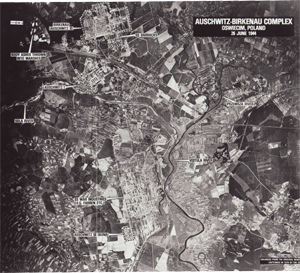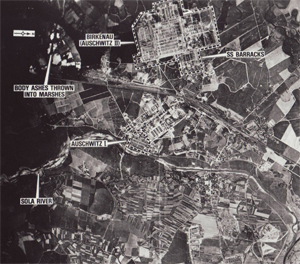Auschwitz | Buna/Monowitz

© National Archives, Washington, DC

© National Archives, Washington, DC
By order of Reichsführer-SS and Chief of the German Police Heinrich Himmler on April 27, 1940, the Auschwitz concentration camp was built near the town of Oświęcim/Auschwitz, 60 km (about 37 miles) west of Cracow. In late 1943, the concentration camp consisted of three independent camp areas: Auschwitz I (main camp), Auschwitz II (Birkenau), and Auschwitz III (Buna/Monowitz and subcamps). The Red Army liberated the camp on January 27, 1945.
During the four and one-half years of its existence, Auschwitz was the National Socialists’ largest extermination center. The systematic mass extermination of human beings, the bulk of whom were Jews, as well as Sinti and Roma, from every part of Europe was carried out at Auschwitz on an industrial scale with the poison gas Zyklon B. The overall number of people killed in Auschwitz can no longer be discovered with certainty, because of the perpetrators’ systematic blurring of the traces—for example, the burning of the transport lists for the deported Jews as of summer 1944—and the fact that an unascertainable number of the deportees were selected right after their arrival in Auschwitz and gassed without being recorded beforehand. Thus the estimates in the research literature range from 1.1 to 1.6 million victims.
Auschwitz also was one of the largest forced labor camps for German industry. In 28 subcamps, prisoners were used for forced labor in agricultural operations, armaments plants, coal mines, and other production facilities until they were physically exhausted. A large number of forced laborers were deployed at the construction site of I.G. Auschwitz.
















